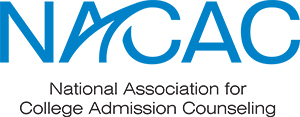Understand how much college tuition is today, what your family will be expected to pay, and how you can take proactive steps to reduce costs and save money. This blog will dive into the most recent tuition trends admissions experts are seeing and the difference between sticker prices and net prices that every parent needs to know.
Nearly every family with a teenager applying to college has two worries—one obvious and one hidden. The first and most immediate concern is whether their child will be admitted to college, especially to a great one: a place where they’ll grow as a person and citizen; where they’ll gain skills for a fulfilling career; and where they’ll realize the potential everyone knows they have.
The second worry is usually more private, shared only with family and close friends, and sometimes hidden from the students themselves: how much a college tuition costs and how they’ll pay for it.
Table of Contents
- Average College Tuition Trends
- The Real Cost of College: Sticker Price vs. What Families Actually Pay
- How Families Can Lower College Tuition Costs
- Frequently Asked Questions about College Tuition
Key Takeaways
- A recent College Board report confirmed that while sticker prices for college tuition are on the rise, the amount families need to pay has decreased significantly due to sizable financial aid and scholarship opportunities.
- The average private college tuition in 2025 was reported to be approximately $16,510, after financial aid deductions and tuition discounts.
- While not every student will be guaranteed an affordable tuition, there are steps families can take to ensure the odds are in their favor, including conducting strong college research, working with financial aid consultants, negotiating packages, and more.
Average College Tuition Trends
Every year, the College Board publishes an incredibly useful report on trends in college tuition. It tracks changes in tuition, cost of attendance, and college financing like grant aid and loans over time, and breaks down those costs by the type of institution (public, private, and two-year). For your convenience, we’ve summarized the sticker price (reported cost by colleges) and the net price (what families actually pay) for the last three years below:
|
Academic Year |
Public 2-Year College |
Public 4-Year College (In-State) |
Private Nonprofit 4-Year Colleges |
|||
|
Sticker Price |
Net Price |
Sticker Price |
Net Price |
Sticker Price |
Net Price |
|
|
2024-2025 |
$4,050 |
$0 |
$11,610 |
$2,480 (est.) |
$43,350 |
$16,510 (est.) |
|
2023-2024 |
$4,070 |
$0 |
$11,660 |
$2,500 (est.) |
$43,030 |
$16,500 (est.) |
|
2022-2023 |
$4,180 |
$0 |
$11,800 |
$2,570 |
$42,870 |
$16,490 |
The 2025 report confirmed a trend we’ve seen building for years: the average college tuition is getting dramatically cheaper for most Americans. The average private college tuition in 2025 being approximately $16,510, after financial aid deductions and discounts.
To be specific: over the last ten years, the net cost of attending an in-state public college has declined by 40%, and the cost of private colleges is way down, too.
Now, that’s not immediately obvious from the topline numbers: after rising sharply over the previous two decades, published public-school tuition is down just 4% from 2014. Private nonprofit colleges are listing tuition prices a bit higher than they used to be. The terrifying myth of ever-rising tuition comes from a real phenomenon, and parents are right to be nervous at the advertised price of college.
The Real Cost of College Tuition: Sticker Price vs. What Families Actually Pay
When families ask, “How much is college tuition?” the answer can be surprisingly different depending on whether you're looking at the sticker price or the net price. While the average college tuition listed on university websites continues to climb, the amount that families pay has been declining in many cases (thanks to record levels of financial aid and tuition discounts).
For example, take the University of California (UC) system, which lists about $15,000 tuition for in-state students and $50,000 for out-of-state students. At first glance, these numbers may sound intimidating. But those numbers conceal a deeper truth: 70% of California residents receive financial aid, and 55% of in-state students pay no tuition at all.
The even better news is that they’re not the only colleges that offer such discounted tuition costs. Many public colleges across the country are discounting tuition for in-state and out-of-state students.
And the good news doesn’t end with public colleges. According to that same College Board study, the average student enrolled in a private nonprofit college pays about $16,000 per year in tuition, just 38% of the published number, driven by a huge increase in grant aid over the last ten years.
In short, while the average college tuition may be on the rise, the net cost is often far lower and more affordable.
How Families Can Lower College Tuition Costs
If you’re wondering how much you will be on the hook for when it comes to your teen’s college tuition costs, the good news is that there are proactive steps your family can take to ensure college is more affordable.
First, it’s important to note that not every student is going to qualify for a tuition discount at every college. Some colleges simply do not distribute any merit aid. Colleges that do not award merit aid include the Ivy League schools, Duke, and Stanford, which award only need-based aid.
FAQ: What’s the difference between merit and need-based aid?
Merit-based aid is awarded based on achievement (or merit). A student’s academic excellence and special achievements are taken into consideration, not the financial circumstances of the family.
Need-based aid is awarded to a family based on their financial situation. This is determined by FAFSA or CSS Profile.
Smart School Selection = More Aid
Students getting the most aid and paying the lowest costs for their education are the ones who carefully select colleges that fit their values and ambitions. At Collegewise, we’re justifiably proud of our success in getting our students the most aid possible, with the most recent 2025 numbers showing our students received an average of $73,600 in financial aid.
It’s because we encourage students to discover less-famous colleges that are nonetheless a great fit for them. And when teenagers apply to a balanced list of colleges, good things happen. To make the most out of college, whether academically, socially, or financially, you have to put in the work. It’s not easy to find the colleges that will offer the highest return on a student’s investment of time, energy, and money, but it is well worth it. A thoughtful, intentional list-building process will almost always result in lower expenses, higher satisfaction, and a more rewarding college experience.
Related: How Many Colleges Should You Apply To?
Consider Regional Aid and Merit Scholarships
Some colleges often have regional agreements that offer lower tuition and fees for out-of-state applicants. The Western Undergraduate Exchange (WUE) or New England Regional Program are two examples of programs that reduce out-of-state tuition for families.
Likewise, many high-achieving students are eligible for (and can benefit from) discounted tuition due to their academic excellence. Certain scholarships, such as Kentucky’s Otis A. Singletary Award, offer full tuition coverage for students with strong GPAs and SAT scores, regardless of their state residency.
Consult with a Financial Aid Expert Early
Consider speaking with a financial advisor or a college counselor to learn more about your family’s options. These experts can be a great sounding board for your family as you navigate the complexities of financial aid, but also expose you to funding opportunities you may have missed.
Negotiate Financial Aid Packages
Yes, students can negotiate financial aid packages. Students who receive multiple offers are in a unique position to compare financial aid packages, and in some cases, leverage offers from other schools. Some schools are willing to match offers, especially if your student is a very strong candidate.
Additionally, don’t be afraid to appeal your financial aid packages if your financial situation has changed considerably since your teen applied to that college. If you’re confused about how to approach these kinds of conversations, it’s likely the best time to consult with a higher education professional to understand your options and next steps forward.
Frequently Asked Questions about College Tuition
Which college has the most expensive tuition?
The most expensive college tuition goes to Vassar College, with a reported tuition cost of $73,275. Including housing, supplies, and insurance, students can potentially pay upwards of $121,000+ for one academic year.
Where does college tuition money go?
Every college will allocate its tuition funds differently, but generally, college tuition goes toward paying for a range of expenses to ensure the quality of the institution and the experiences of students and faculty are at the highest level. These expenses include:
- Faculty and staff salaries
- Grounds and building maintenance
- Research facilities and projects
- Academic services (libraries, classrooms, and lecture halls)
- Student services
- Grants, scholarships, and financial aid
About Us: With more than twenty-six years of experience, Collegewise counselors and tutors are at the forefront of the ever-evolving admissions landscape. Our work has always centered on you: the student. And just like we’ve always done, we look for ways for you to be your best self - whether it’s in the classroom, in your applications, or in the right-fit college environment. Our range of tools includes counseling, test prep, academic tutoring, and essay management, all with the support of our proprietary platform, leading to 4x higher than average admissions rates.



/Blog%20CTAs%20(7).png?width=600&height=200&name=Blog%20CTAs%20(7).png)
/Webinar%20blog%20CTA%20(1).png?width=600&height=200&name=Webinar%20blog%20CTA%20(1).png)


